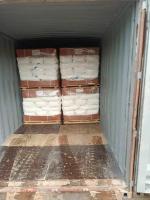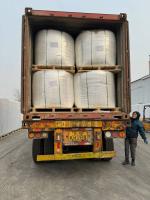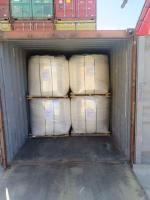Our Products
Polyacrylamide / anionic polyacrylamide of senfloc 2550 senfloc 3360 senfloc 3110 3180 can be replaced by Chinafloc A

anionic polyacrylamide of senfloc 2550 senfloc 3360 senfloc 3110 3180 can be replaced by Chinafloc A
anionic polyacrylamide of senfloc 2550 senfloc 3360 senfloc 3110 3180 are anionic polyacrylamide models with high anionic charge ,mainly used for kinds of mineral processing.Chinafloc A series can replace of them with good result.
Anionic polyacrylamide (APAM) is a water-soluble polymer that finds extensive application across various industries due to its remarkable flocculating, thickening, and clarifying properties. When it comes to anionic polyacrylamide with a high degree of hydrolysis, its effectiveness in specific applications is further enhanced, particularly in scenarios requiring robust interaction with negatively charged particles. This essay explores the main application of anionic polyacrylamide with a high hydrolysis degree, focusing on its critical role in enhanced oil recovery (EOR), water treatment, and mining. By examining its functions and benefits, we can appreciate the importance of this specialized polymer in optimizing industrial processes.
Enhanced Oil Recovery (EOR)
One of the primary applications of anionic polyacrylamide with a high hydrolysis degree is in enhanced oil recovery (EOR). EOR techniques are employed to increase the amount of crude oil that can be extracted from an oil field. As oil fields mature, the natural pressure that drives oil to the surface decreases, making it challenging to extract the remaining oil. EOR techniques, including polymer flooding, are used to overcome these challenges.
In polymer flooding, anionic polyacrylamide with a high hydrolysis degree is injected into the reservoir along with water. The high hydrolysis degree of the polymer enhances its ability to increase the viscosity of the injected water, which in turn improves the sweep efficiency of the water flooding process. This means that the viscous polymer solution can more effectively displace the oil trapped in the reservoir, pushing it towards the production wells.
The increased viscosity provided by anionic polyacrylamide with a high hydrolysis degree ensures a more uniform displacement front, reducing the bypassing of oil and improving overall recovery rates. This application is particularly beneficial in heterogeneous reservoirs where variations in permeability can lead to inefficient water flooding. By improving the mobility ratio and ensuring a more effective displacement of oil, this type of anionic polyacrylamide significantly enhances oil recovery.
Water Treatment
Another significant application of anionic polyacrylamide with a high hydrolysis degree is in water treatment. Water treatment processes, both for industrial and municipal applications, often require the removal of suspended solids, organic matter, and other contaminants. Anionic polyacrylamide is widely used as a flocculant in these processes due to its ability to aggregate fine particles into larger flocs, which can then be easily separated from the water.
In water treatment, anionic polyacrylamide with a high hydrolysis degree is particularly effective in treating wastewater with high levels of suspended solids and organic contaminants. The high degree of hydrolysis enhances the polymer’s interaction with negatively charged particles, promoting more efficient flocculation and sedimentation. This results in clearer treated water and reduces the load on subsequent filtration stages.
For example, in industrial wastewater treatment, the addition of anionic polyacrylamide with a high hydrolysis degree can significantly improve the removal of pollutants from wastewater streams generated by industries such as textiles, paper manufacturing, and food processing. The enhanced flocculation properties ensure that fine particles, colloids, and organic matter are aggregated and settled out, resulting in cleaner effluent that meets environmental discharge standards.
In municipal wastewater treatment plants, anionic polyacrylamide with a high hydrolysis degree is used to treat sewage and sludge. It helps in the efficient dewatering of sludge, reducing its volume and facilitating easier handling and disposal. The improved clarity of treated water also aids in the overall effectiveness of the treatment process, ensuring that water released back into the environment is of high quality.
Mining and Mineral Processing
In the mining and mineral processing industries, anionic polyacrylamide with a high hydrolysis degree is extensively used to enhance the efficiency of solid-liquid separation processes. These industries generate large volumes of slurry containing fine particles that need to be separated from the liquid phase for further processing or disposal. Anionic polyacrylamide acts as a flocculant, promoting the aggregation of fine particles into larger flocs that can be more easily settled or filtered.
The high degree of hydrolysis of this type of anionic polyacrylamide enhances its ability to interact with the negatively charged mineral particles, making it particularly effective in treating slurries with high concentrations of fines. In mineral processing, this results in improved recovery rates of valuable minerals, reduced water consumption, and minimized waste generation.
For example, in the processing of bauxite to produce alumina, anionic polyacrylamide with a high hydrolysis degree is used to improve the sedimentation and filtration of red mud, a by-product of the refining process. The enhanced flocculation properties of the polymer ensure that the fine particles in the red mud are aggregated and settled out more efficiently, resulting in clearer process water and more manageable waste.
In coal preparation plants, anionic polyacrylamide with a high hydrolysis degree is used to treat the slurry generated during the washing and cleaning of coal. The polymer promotes the rapid settling of fine coal particles, improving the clarity of process water and enhancing the recovery of clean coal. This leads to more efficient operation of the plant and reduces the environmental impact of coal processing.
Soil Conditioning and Agriculture
Anionic polyacrylamide with a high hydrolysis degree also finds application in soil conditioning and agriculture. When applied to soil, it helps improve soil structure, enhance water retention, and reduce erosion. The polymer promotes the aggregation of soil particles, resulting in better water infiltration and reduced surface runoff. This is particularly beneficial in agricultural fields, where improved soil structure leads to healthier plant growth and higher crop yields.
In irrigation systems, anionic polyacrylamide with a high hydrolysis degree is used to treat irrigation water, reducing the amount of suspended solids and preventing clogging of irrigation equipment. This ensures efficient water distribution and reduces maintenance costs associated with clogged irrigation systems.



317_small.jpg)

